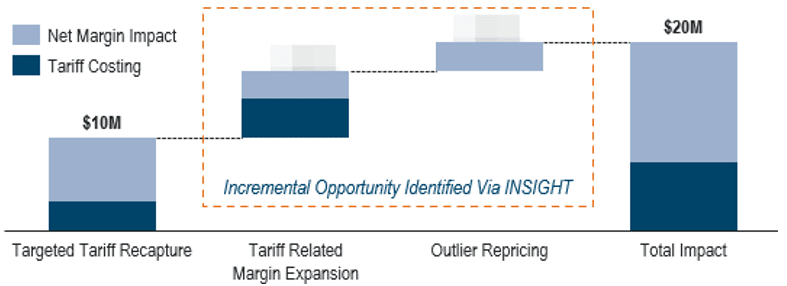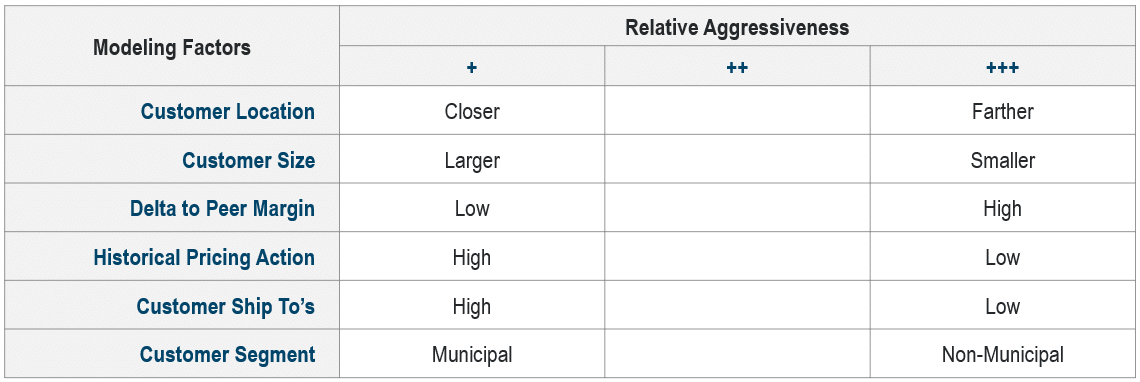Specialty Chemicals Provider
Optimized Tariff Management for Enhanced Profitability
Understanding Tariff Exposure and Optimizing Tariff Recapture Plan
A specialty chemicals distributor optimized their existing tariff recapture workstream to identify $10M of incremental revenue opportunity.
This specialty chemicals distributor faced significant margin erosion due to limited visibility to real-time costs, ongoing ERP transformation challenges, and decentralized pricing autonomy. By thoroughly assessing the tariff recapture methodology, we uncovered $7M in unrecognized tariff exposure and identified $3M in low-margin pricing outliers for correction. Implementing a dynamic model to strategically offset tariffs while preserving margin neutrality allowed the client to optimize pricing strategies, resulting in a substantial boost to profitability.
Explore More Case Studies
Situation
Facing Margin Erosion Amid Cost Volatility
- Limited visibility into real-time costs led to ongoing margin erosion
- Historical acquisitions and subsequent ERP transformation made reporting challenging
- Sales reps had nearly full autonomy over pricing, relying on individual expertise
- Pricing for key products was heavily influenced by commodity index fluctuations
- Relatively healthy margin spread between customers and products with opportunity for improvement
- ERP constraints made price updates and performance tracking highly manual
Tariff Related Margin Expansion Opportunity

Approach
Unlocked Untapped Growth Through Strategic Tariff and Price Modeling
- Assessed and validated the business’s tariff recapture methodology for effectiveness, identifying an additional $7M of tariff exposure that was not identified and included in the current execution plan
- Completed additional modeling to identify an additional $3M of low-margin price outliers for the client to correct during the same repricing event
- Implemented a dynamic situational model to strategically offset tariffs
- Ensured all tariff-related pricing adjustments maintained margin rate neutrality
Situational Model Framework

Combined historical pricing data, key customer attributes, and real-time market dynamics to determine the optimal tariff strategy and level of pricing aggressiveness
